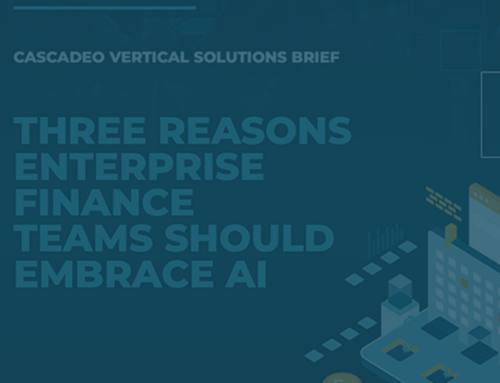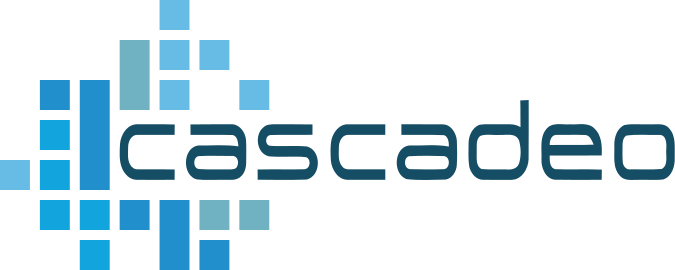
Modern business demands an infrastructure that’s ready to handle generative AI, and the best infrastructure for AI is in the cloud.
Is Your Infrastructure Ready to Achieve Your Gen AI Goals?
 The list of reasons to pursue a cloud-native digital transformation is long. A well-designed public cloud infrastructure is more secure, sustainable, and flexible than on-prem, offering you business agility and the capacity to grow at scale. In the past year, a new reason to get in the cloud has emerged: generative AI. Gartner predicts that by 2025, 70% of enterprises will prioritize generative AI strategy as a key business concern. If you’re not one of them, you risk falling behind the competition.
The list of reasons to pursue a cloud-native digital transformation is long. A well-designed public cloud infrastructure is more secure, sustainable, and flexible than on-prem, offering you business agility and the capacity to grow at scale. In the past year, a new reason to get in the cloud has emerged: generative AI. Gartner predicts that by 2025, 70% of enterprises will prioritize generative AI strategy as a key business concern. If you’re not one of them, you risk falling behind the competition.
Generative AI will likely create expectations for stakeholders from all perspectives, again according to Gartner. Investors will see it as an opportunity for growth, customers will bring increasing familiarity with its power from their own use, and employees will demand new ways to streamline their work with the assistance of LLMs. The use cases to fulfill those expectations are almost endless, from automation of simple tasks to advanced data functions and infrastructure management.
All of which is to say, if you haven’t embraced generative AI yet, you’ll need to soon, with a carefully planned strategy. And because generative AI works best in the cloud, you’ll want to start by assessing your current infrastructure. If you’re not in the cloud yet, a migration plan is the first step of your gen AI plans.
Why? Because generative AI’s highest impact functions are built on large stores of data and adaptable engagements with that data. Cloud computing’s signature features, including composability, scalability, sustainability, and security are all essential to an effective generative AI program.
Composability is one of the foundations of cloud architecture. When your apps, functions, and data are loosely coupled, you have the flexibility to adapt to changing needs, market demands, and business growth by rearranging, replacing, or upgrading modules without impacting one another or the system as a whole. For gen AI, this means the ability to access and utilize data via evolving approaches as the technology progresses, and to take advantage of AI-powered modeling and predictive analytics without building permanent architecture to support each project.
Cloud scalability is vital to supporting short-term projects like generating synthetic data pools. Synthetic data created by generative AI tools mimics the patterns of your authentic data without exposing your customer or internal information to security exposures, and can be used to produce a variety of predictive models. Scalability allows you to increase your storage and processing capacity without permanent expansion of servers, then reduce that capacity when the project ends, unlike on-prem architectures, where you would have to add and maintain hardware to accomplish the same goals. Scalability also gives you the option to create entirely new development and testing environments for experimental AI applications without committing to long-term server expenses.
One unfortunate disadvantage of generative AI is that it consumes massive amounts of energy due to the amount of data required to train and operate foundation models. While your business is unlikely to create and manage your own LLM, engagement with these enormous troves of data will impact your overall sustainability profile. The good news is that all three hyperscalers are working to address their environmental impact by shifting their consumption to renewable sources: Microsoft and Google have both pledged to be carbon negative or neutral by 2030; AWS has set the same goal for 2040. In the cloud, generative AI doesn’t have to negatively impact your carbon footprint.
While cloud security is sometimes seen as a cause for concern, it doesn’t need to be. As we’ve discussed in the past, cloud vendors have far greater resources at hand for security, and have established shared responsibility models that delineate responsibility for keeping data and operations secure. Since generative AI raises its own package of security worries, the additional measures offered in the cloud can help provide defenses, as can strong AI use and ethics policies that govern your employees’ engagement with LLMs. These policies are especially important considering that 88% of security breaches in the cloud result from human error; likewise, generative AI security issues tend to arise from users including protected data in prompts without excluding that data from training sets.
If you’re experimenting with generative and composite AI implementations, you are already engaging AI in the cloud. A wide variety of cloud-based SaaS products your employees use every day are cloud-based, such as Microsoft Office and Adobe Acrobat, and are using generative AI integrations to enhance user experience. Infrastructure monitoring platforms like Cascadeo AI are also cloud-based and use composite AI to power services.
While there was initially concern about whether cloud vendors were ready for the demands of generative AI, all three hyperscalers have quickly adapted, upgrading their equipment to accommodate your needs; the cost of doing the same on-prem is prohibitive for most businesses, especially when unpredictable opportunities are likely to develop in the AI space in a short time, requiring further modification.
It’s clear that modern business demands an infrastructure that’s ready to handle generative AI, and the best infrastructure for AI is in the cloud. A one-size-fits-all lift-and-shift won’t get you there. To keep pace with the competition, businesses that aren’t yet in the cloud will need expert-built digital transformations built to handle the endless AI possibilities that will drive future growth. Any strong AI strategy should begin with a custom migration and modernization plan.




